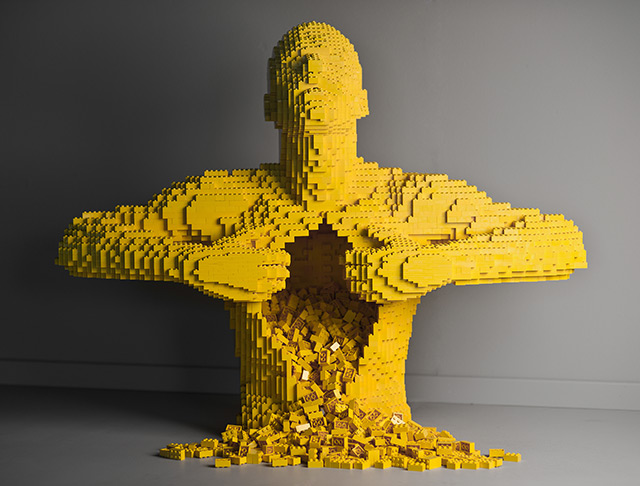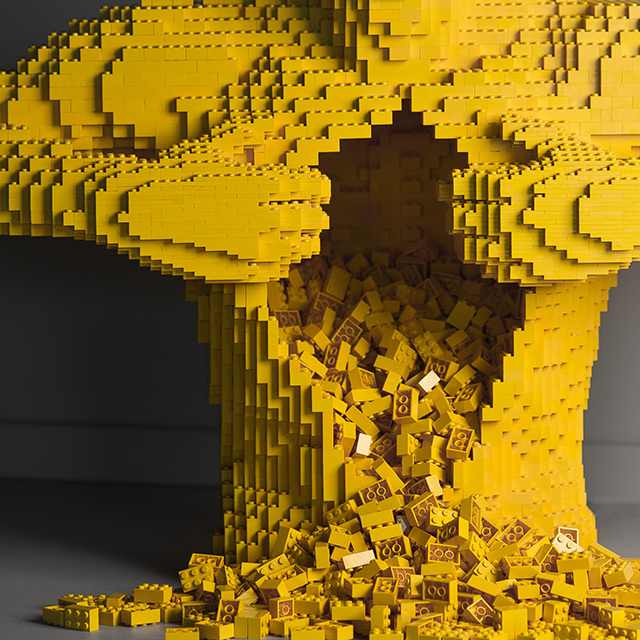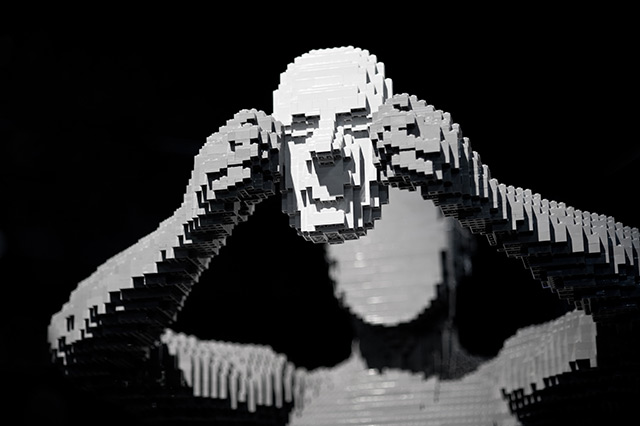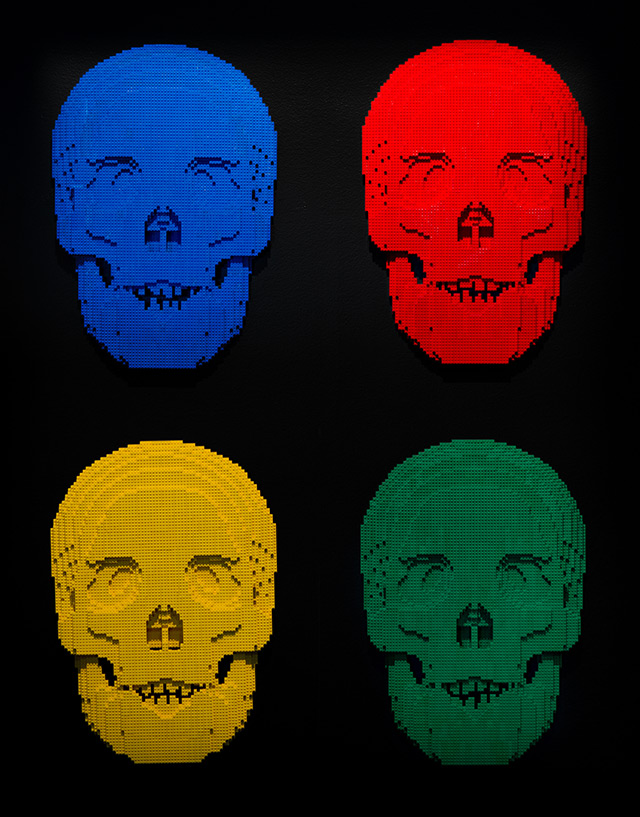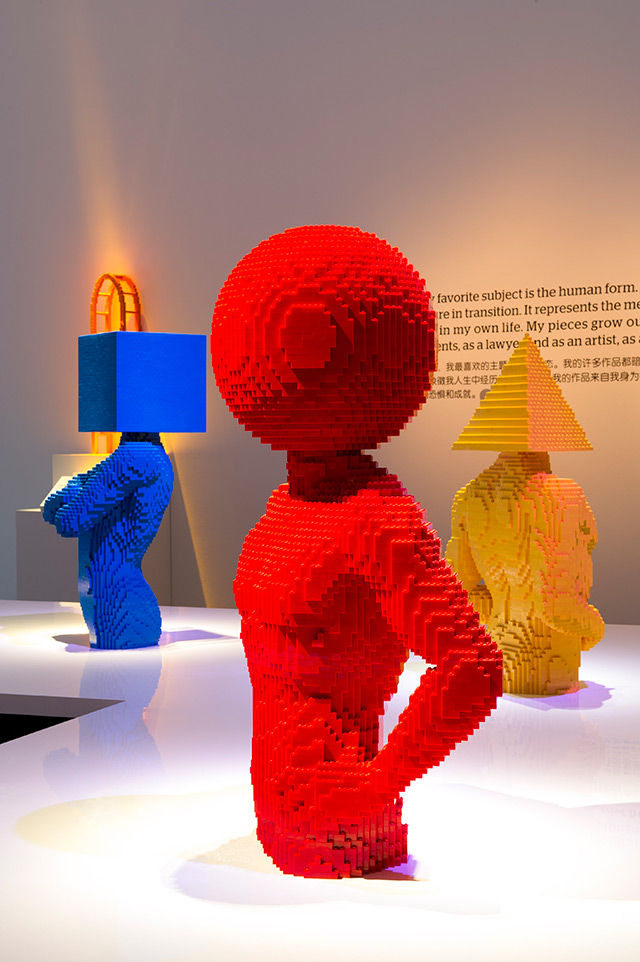INHALE is a cultural platform where artists are presented, where great projects are given credit and readers find inspiration. Think about Inhale as if it were a map: we can help you discover which are the must-see events all over the world, what is happening now in the artistic and cultural world as well as guide you through the latest designers’ products. Inhale interconnects domains that you are interested in, so that you will know all the events, places, galleries, studios that are a must-see. We have a 360 degree overview on art and culture and a passion to share.

It is best not to look too closely at Edvard Munch’s screamer at the exhibition The Art of the Brick, which opened this week at Discovery Times Square. Because then you would see that the head is pieced together out of beige and white Lego blocks, their studs protruding. Leonardo’s Mona Lisa, on display nearby, has a smoother surface, composed of 4,573 “bricks” (as they are called by aficionados), but you’d never mistake it for the original — the overall effect is more allusion than illusion.
The portrait’s creator, Nathan Sawaya, seems perfectly content with that. He has snapped together a Legoistic survey of art masterpieces, along with galleries of original constructions. In varied forms, this show of his work has appeared in other cities and toured internationally but has never been shown in New York.
Everything is built from Lego blocks using only the colors that Danish company makes available. And mostly, it looks it. Mr. Sawaya proudly notes on the “Mona Lisa” label that “a blurred photo of the brick replica version could easily be mistaken for a blurred photo of the original.”
After all, toys are never meant actually to function as real objects do. They are only meant to come close enough to stir the imagination: they let us approach the world from a distance and begin to make sense of it. One of the things we learn from play is the art of approximation, so why not relish here the approximation of art?
But what is going on here? Despite some awkward or kitschy examples, we get a very particular kind of pleasure from these constructions. It has something to do not just with the use of toy blocks as an artistic medium but also with the character of the bricks themselves.
What a strange ambition this is in the first place! Why pick a medium that offers not unlimited possibilities but very few? It would be like a poet deciding to use only half the letters of the alphabet.
via nytimes.com



